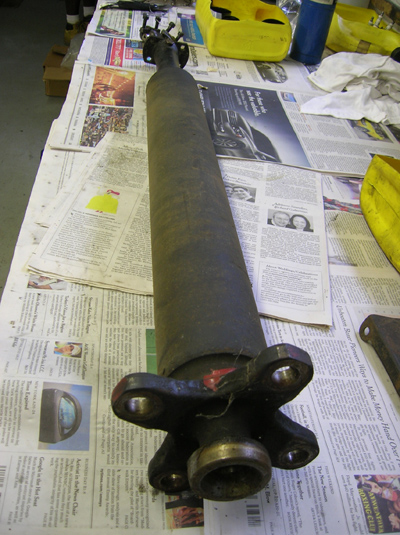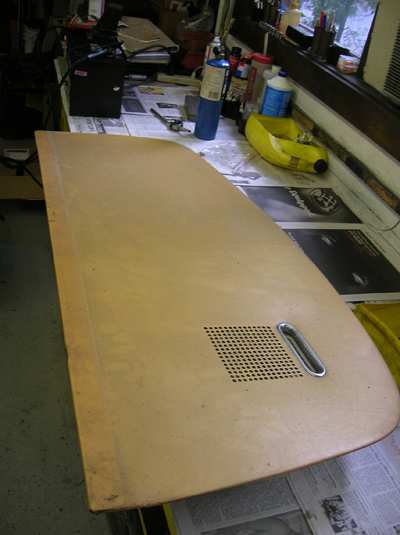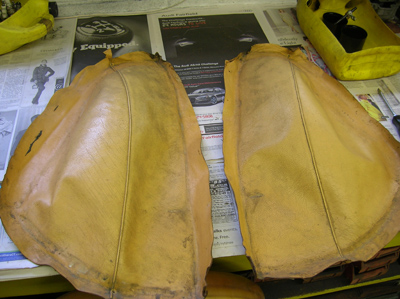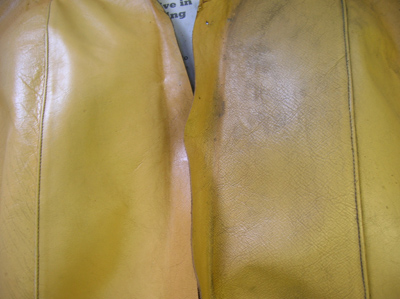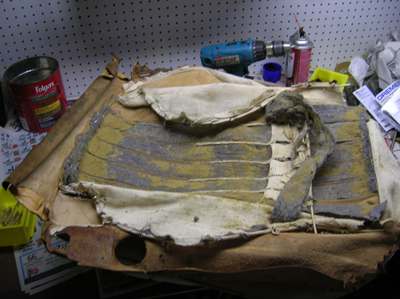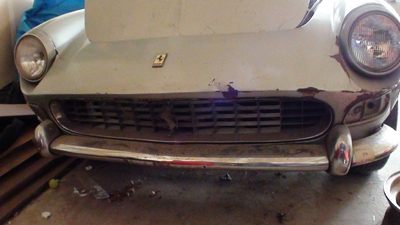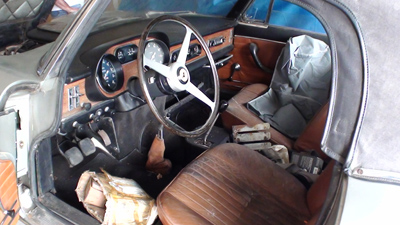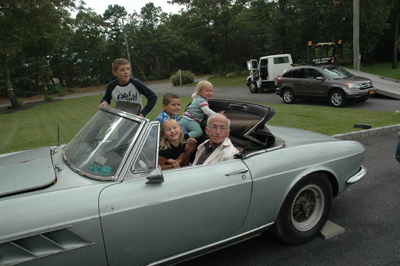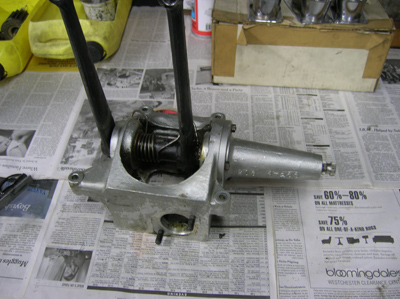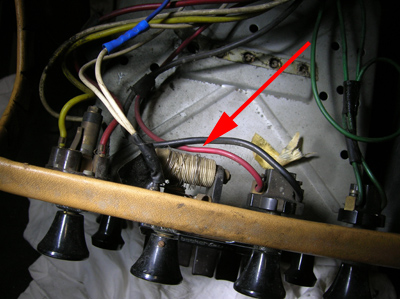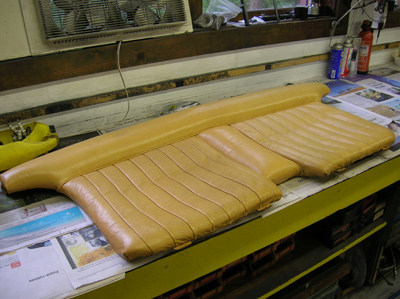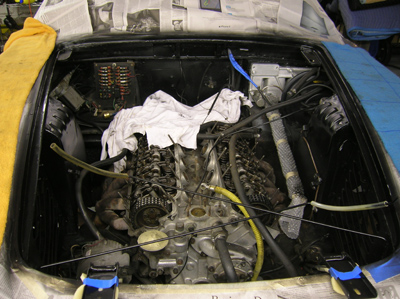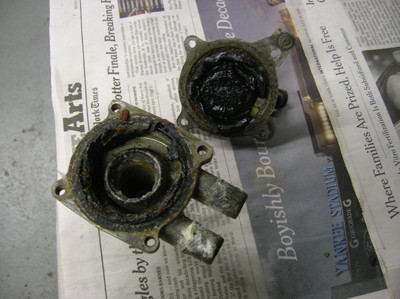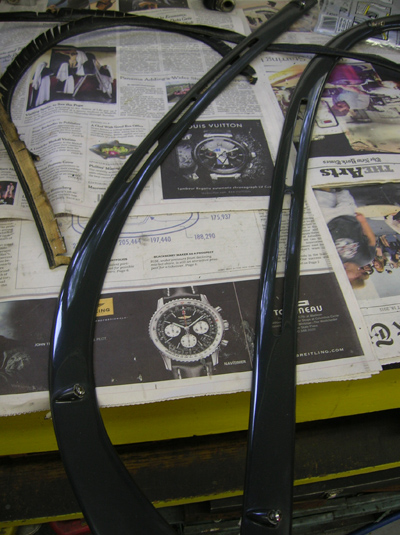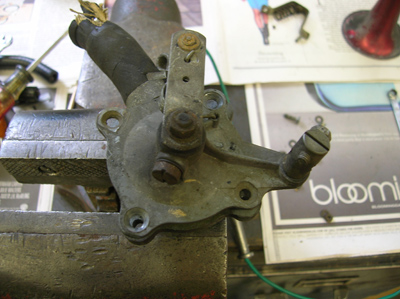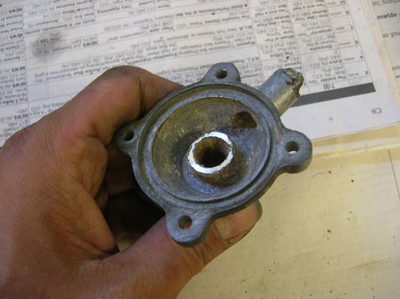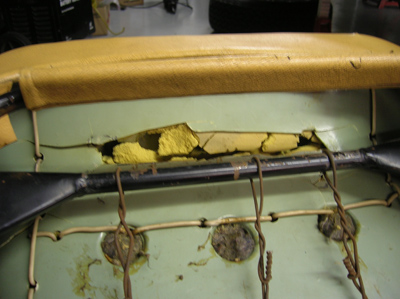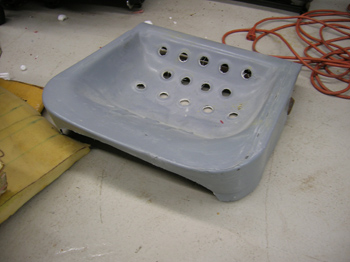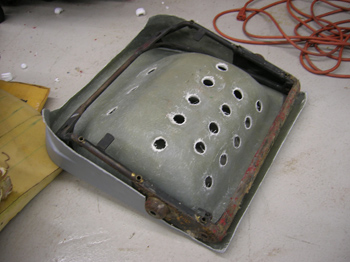Gas Tank and Engine Prep
September 30, 20119/30/11
Gas Tanks and Engine Prep
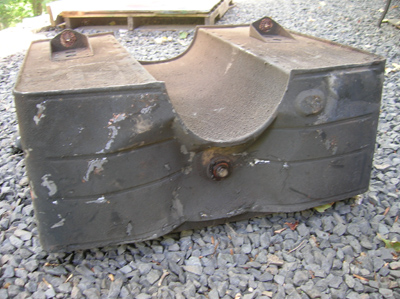
Continuing work on an Interim 330 at the shop we wanted to fix a pretty bad dent in gas tank. It looks like sometime in its past, a jack was used at the bottom of the gas tank to raise the car. Unfortunately, the weight of the car was no match for the strength of the gas tank, so it was bent in the center. I was amazed the soldered seams did not split, but the owner wanted us to fix the dent in the tank. 
Francois has some tools he made specifically for taking these dents out and we worked together to pull most of the dent out of the tank. We’ll send it out for pressure testing and seal up any leaks. Hopefully with some care, no one will try to jack the car up by the gas tank again!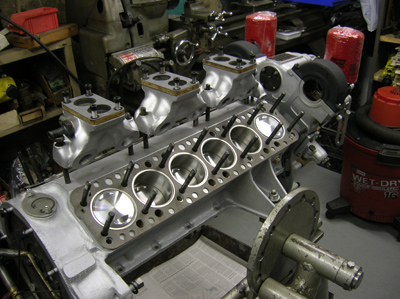
The bottom end of 2259’s engine is coming together nicely. Francois finds the evenings the best time to work on rebuilding an engine because the phone stop ringing and there’s less distractions. Every morning when I come in, I see more progress. 
My job during the day is to prepare the small parts that will need to go back on the engine as the Frenchman needs them. Finding pieces like the accelerator rod bearing stands and bearings also includes inspecting, cleaning and greasing the parts before putting them back in service. 
Now is as good of a time as any to clean and polish the black plastic knobs that go on the valve covers. A few minutes on the buffing wheel will make these knobs look great on a fresh engine. 
The valve covers were powder coated by the previous owner, and the grain is a little too fine for my tastes. Powder coating is very durable, but the wrinkle finishes I’ve seen don’t wrinkle enough!
There were a couple of masking issues that needed to addressed. The chain cover cap that was powder coated was masked improperly, and an area where a crucial oil seal was painted. I had to carefully scrape and strip the powder coating in this area so the oil seal would work properly.
The same problem showed up on the other side of the cap.
Speaking of paint. Here’s the brake reservoir cap that has been on this car since at least 1969, and clearly shows black paint on the blue FIAT logo. I know Ferrari judges allow for either black paint or the blue FIAT tag to show on this cap, but I just wanted to show this data point to the judges! But I digress…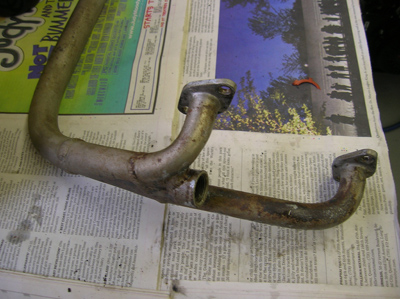
The coolant pipe that runs along the left side of the engine needed cleaning a plating. It’s supposed to be nickel plated, so I cleaned it to prepare if for the platers.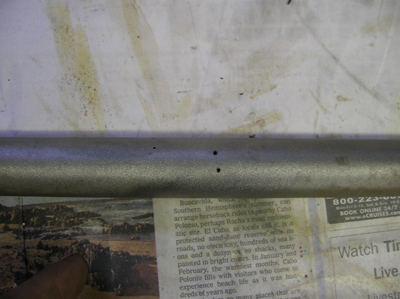
After a thorough cleaning, I noticed small blemishes in the pipe that when poked with a scribe, turned into pin holes.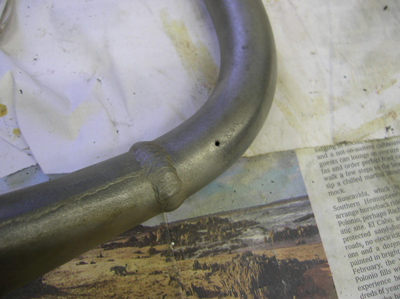
The more I looked, the more I found, and soon I found enough to realize a large section of pipe if not the whole thing may have to be replaced. Coolant must have sat inside this pipe long enough to have rusted from the inside out.
The whole pipe showed little rust spots that when some of them were poked, showed more pin holes. If we patched what we found, I’m sure other thin spots would leak in the future. Time to see who’s making this pipe in reproduction!
Reminder: If you have a Ferrari related project, car, or idea you’d like to explore, I’d love to talk to you. I can also help if you’re thinking of buying or selling. This website represents what I love to do, and now it’s how I make a living, so if you’d like to do something together, let me know. It all begins with an e-mail!
Previous Restoration Day
Next Restoration Day
Home page


